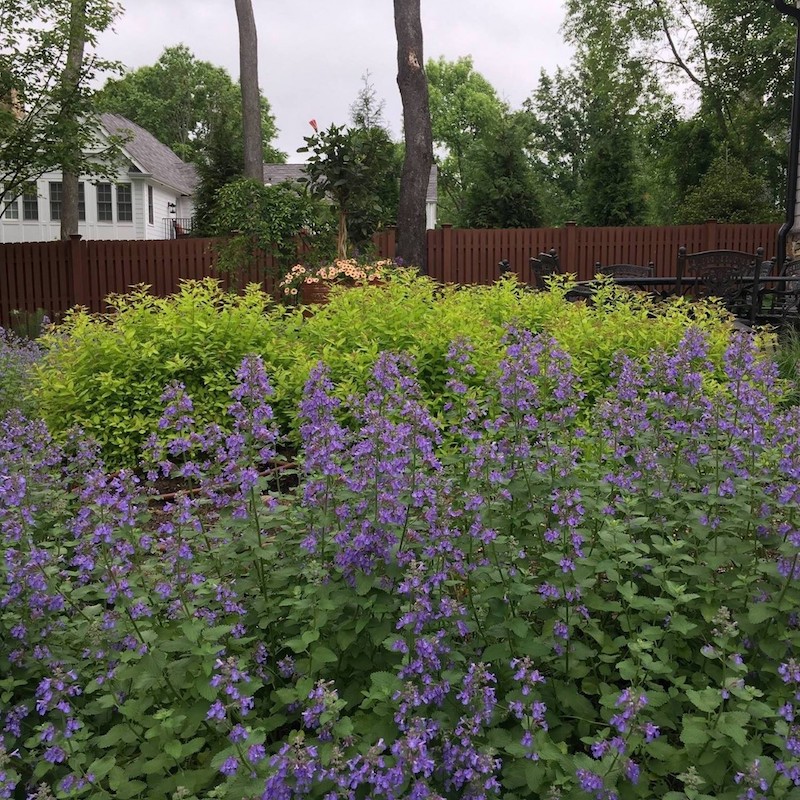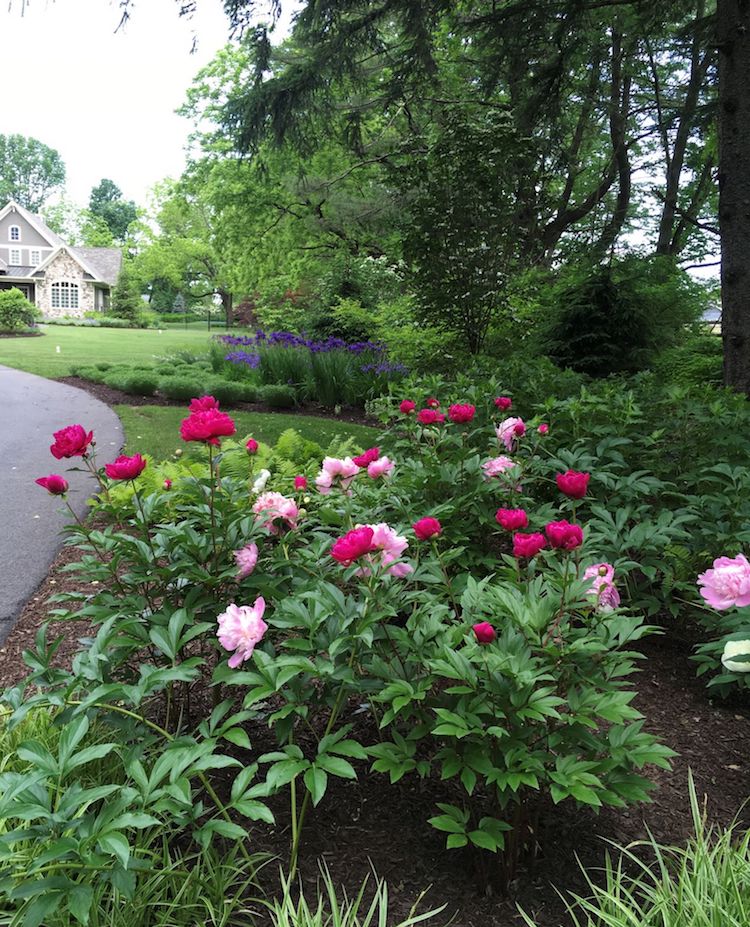It’s magical to spot a baby deer curled up in a meadow or a whole herd meandering through a forest, but not so wonderful to see the damage they can inflict on landscapes, natural and planned.
In the last decade, the problem has worsened. Whitetail deer are encroaching neighborhoods and corporate sites rubbing and devouring trees, shrubs and groundcovers from the Rockies to New England and the Deep South. Deer live an average of 10 years, reproducing annually. The does go into heat in late fall and typically produce two fawns in spring. Deer are extremely territorial and have few natural predators, so once a deer community is established, an unmanaged population will continue to grow. In a year, just one deer can consume a ton and a half of greenery!

Landscape professionals have been fighting back by specifying and installing high fences around properties to keep the deer out, spraying plants with repellant, and installing less palatable plants.
However, fencing and routine spraying may not always be an option. Fences are expensive and while deer repellants do work, you must be diligent and proactive, spraying regularly and after heavy rains.
One thing in our favor is that deer are picky eaters, so it is possible to design a landscape with plants they won’t destroy. But is it possible to create a planting design that is unique and dynamic with colorful flowers? It is! Skeptical? Understandable, since many of the “Deer Resistant Plant Lists” out there include a lot of not-so-deer-resistant plants.
As a garden designer and director of horticulture here in rural New Jersey, deer have been a major creative block and source of destruction for me and my clients’ properties. They were sucking the fun out of my job and as a result, I began trying all sorts of new plants and techniques to see what really worked. Over the years (decades, actually), I have come up with a pretty solid list of plants that are not only passed over by deer, but quite beautiful! [To view the USDA zones referenced in the following tables, see map at the end of this article.]

The list of trees is short, which makes creating a deer resistant evergreen privacy hedge one of the greatest challenges. Arborvitaes (Thuja sp.) tend to be the screen of choice – a perfect green wall that can be hedged, fit in tight spaces and even tolerate some shade. However, varying species of Thuja show different levels of deer resistance. White cedar, Thuja occidentalis, found in Eastern states, is often eaten by deer, but western red cedar, Thuja plicata, is much less appealing. And since T. plicata is one of the parents of the popular Green Giant Cedar, it’s not a bad choice. But no species of Thuja is deer proof, which is why it did not make that list. If food is scarce and they’re hungry, you’ll need to further protection, like spraying or using riverstone or gravel rather than mulch, as deer don’t like to walk on unlevel surfaces.
Not too many deciduous trees on the list, but that’s not as big of a problem. As long as trees’ branches are high enough so the deer can’t reach them, and tree guards are used to protect the trunks, you can plant almost any variety of shade or ornamental tree.


During really bleak winters, I have seen evidence of deer browsing on the above listed hollys (Ilex sp.) and the plum yew (Cephalotaxus). Heaths and Heathers should go on the list but they are not included because they’re quite particular. Generally, they prefer a sandy or rocky soil and cooler temperatures.

The use of perennials in deer country landscapes is the sure-fire way to get four seasons of color and an array of beautiful blooms throughout the season, making your properties stand out.



Deer will browse Dicentra sp., but only after they have finished blooming and are staring to go dormant. There are so many striking ornamental grasses that deer won’t touch and various ferns for the shade, though fiddleheads may be nipped. Wild ginger Asarum sp. Is absent from this list. We planted a whole mass of it with Japanese Hakone Grass, Hellebores, and Peonies. The deer didn’t touch anything except for the ginger. They ripped it all out of the ground. The same thing may happen to Ajuga sp. and possibly Pulmonaria sp. Try installing larger specimens if you use these plants to prevent deer damage.



Depending upon where you are, there are plants you could add to or subtract from these lists. Right in your county, you may have a client with herds of deer on their front lawn every morning and another in a neighboring town with barely a sign of them. And if they’re hungry enough, they will be a lot less picky and wander off their regular route in search of food. Over the years we have had great success creating beautiful landscapes and gardens in the heart of deer country. And, now you can.

DeStefano is a garden designer and outdoor display horticulturist. She studied Landscape Architecture at Rutgers University and apprenticed in Display Horticulture at Kennett Square, PA-based Longwood Gardens. She and her husband Rob own GreenCraft Associates, a comprehensive landscape architectural firm based in Hunterdon County, NJ that specializes in high end residential, commercial, and municipal landscape site planning and design. GreenCraft incorporates sustainable design practices and “Green Building Principles” into all of their projects. DeStefano has been working in the field providing specialty horticultural services to residential and commercial clients for over 20 years. Prior to GreenCraft, she was the director of horticulture at the former Merck World Headquarters in Whitehouse Station, NJ and the director of horticulture at a high-end residential design build firm based in Basking Ridge NJ. Her field expertise includes the design, installation, and maintenance of perennial, annual, container, and kitchen gardens. She also offers custom holiday decorating services.











![[VIDEO] Dickies®: Discover Workwear That’s Anything But Uniform](https://turfmagazine.com/wp-content/uploads/2023/06/1647663814-4b1a2a7742790a9b1e97a3b963477850192e1d6a9dfba9b07214a77bae25d6e3-d-218x150.jpg)

























![[VIDEO] Dickies®: Discover Workwear That’s Anything But Uniform](https://turfmagazine.com/wp-content/uploads/2023/06/1647663814-4b1a2a7742790a9b1e97a3b963477850192e1d6a9dfba9b07214a77bae25d6e3-d-324x160.jpg)